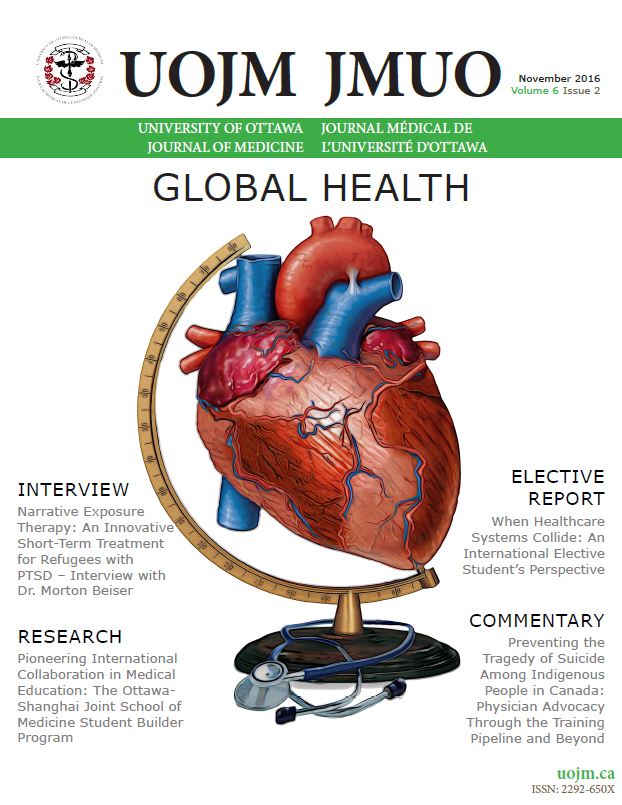First Nation and Medical Student Perspectives on the Participation in Culturally Immersive Learning Experiences During Medical Training
DOI :
https://doi.org/10.18192/uojm.v6i2.1870Résumé
ABSTRACT
Immersive cultural learning placements in First Nations communities allow medical students to develop a first-person perspective and a deeper understanding of the determinants of Indigenous health. Complementary student and community viewpoints on a medical student placement at Mattagami 71 reserve, a First Nations community in Northern Ontario, are presented in this commentary.
RÉSUMÉ
Les placements d’apprentissage culturel par immersion dans les communautés des Premières Nations permettent aux étudiants en médecine de développer une perspective personnelle et une compréhension approfondie des déterminants de la santé chez les personnes autochtones. Ce commentaire présente les points de vue complémentaires d’une étudiante et d’un membre de la communauté sur un placement étudiant à la réserve Mattagami 71, une communauté des Premières Nations dans le nord de l’Ontario.
Références
2. Reading C, Wien F. Health inequalities and social determinants of Aboriginal peoples’ health. Prince George, BC: National Collaborating Centre for Ab¬original Health; 2009.
3. Haskell L, Randall M. Disrupted attachments: A social context complex trauma framework and the lives of Aboriginal Peoples in Canada. Journal of Aboriginal Health. November 2009;5(3):48-99.
4. University of British Columbia. Indigenous Foundations – Government Poli¬cy [Internet]. Vancouver, BC; 2009. Retrieved from: http://indigenousfoun-dations.arts.ubc.ca/home/government-policy.html.
Téléchargements
Publié-e
Numéro
Rubrique
Licence
- Les auteurs qui publient dans le JMUO gardent les droits d’auteur de leurs articles, incluant tous les brouillons et la copie finale publiée dans le journal
- Bien que le JMUO n’a pas les droits d’auteur des articles soumis, en acceptant de publier dans le JMUO, les auteurs donnent le droit au journal d’être les premiers à publier et à distribuer leurs articles.
- Par la suite, les auteurs peuvent soumettre leurs documents à d’autres publications, incluant des revues ou des livres, avec un remerciement de leur première publication dans le JMUO
- Des copies du JMUO seront distribuées à la fois sous format papier et en ligne, et tous les matériaux seront accessibles au public en ligne. Le journal n’a pas de responsabilité légale par rapport à la distribution publique du contenu.
- Prière de vous assurer que tous les auteurs, les coauteurs et les investigateurs
- Le contenu est rendu disponible sous licence Creative Commons Attribution - Pas d'Utilisation Commerciale - Pas de Modification 4.0 International.


